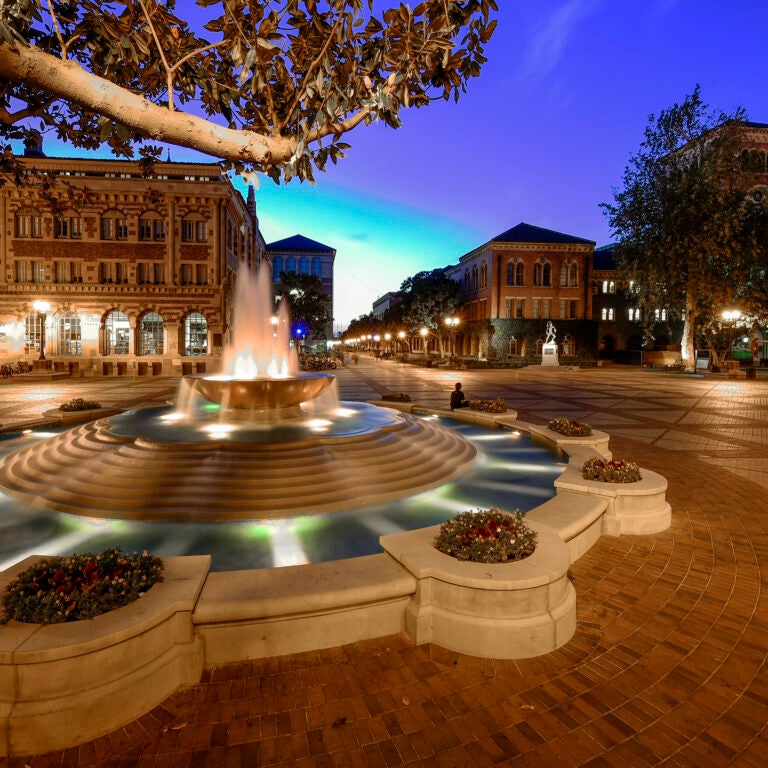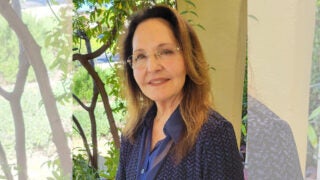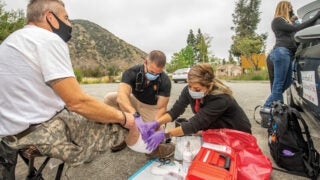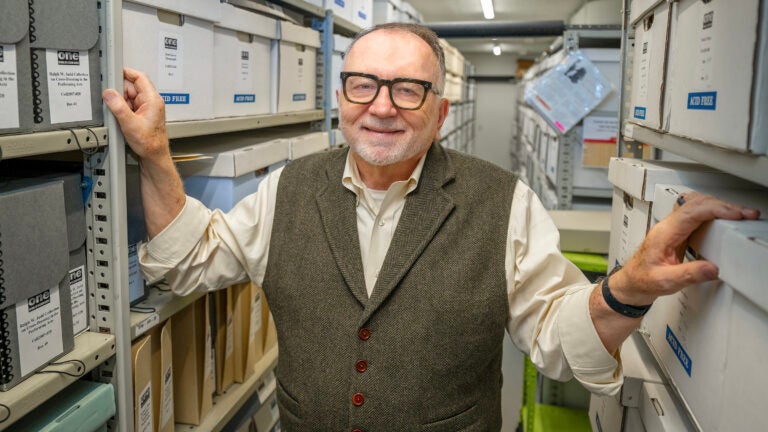
Joseph R. Hawkins has more than three decades of rich memories from his long stint as director of the archives and his preceding years as a volunteer. (USC Photo/Gus Ruelas)
Joseph R. Hawkins leaves ONE Archives at USC transformed and poised for the future
The longtime director of the world’s largest repository of LGBTQ+ materials retires having facilitated its modernization and expansion.
When Joseph R. Hawkins has his final day as director of ONE Archives at the USC Libraries on June 30, he will be closing the curtain on 25 years of overseeing, modernizing and expanding the largest repository of LGBTQ+ materials in the world.
“I have never had a day where I didn’t learn something new,” Hawkins said in a recent interview as he sat inside his half-packed office on the second floor of the archives. “I’ll miss that part of being here where somebody comes in and shows me something that I didn’t know about. What a privilege.”
Founded in 1952 and a part of USC Libraries since 2010, ONE Archives houses millions of items, including more than 13,000 periodicals, 21,000 videos, 30,000 books and monographs, 4,000 artworks and various ephemera.
More than 700 archival collections have been collected and donated to the archives over the decades. They include personal papers from activists, artists and ordinary citizens, as well as records from LGBTQ+ political, social, educational and cultural organizations. These collections have been a treasure trove for researchers — USC students, faculty and the general public alike.

“It’s amazing what comes in the door, what people say and what it means to them,” Hawkins said. “They often used to whisper; that’s something that’s changed since I came here. People would say, ‘We found this under our uncle’s bed. Do you guys want it?’ and I would say, ‘You don’t have to whisper here.’”
With his retirement imminent, Hawkins said he has more than three decades of rich memories from his long stint as director of the archives and his preceding years as a volunteer.
“When I do tours and I walk through the archives, I’ll often show something to someone and they’ll be so touched by it that they’ll start crying,” he said.
There was the time a man from a granting agency came to see the collection and asked Hawkins, obliquely, if there was material from San Francisco during the worst years of the AIDS pandemic in the 1980s and ’90s. Hawkins was able to find the obituary of the man’s late partner in an issue of the Bay Area Reporter newspaper.
“He was so distraught at the time [of his partner’s death] that he didn’t keep the obituary,” Hawkins said. “I photocopied it and gave it to him, and he was deeply touched.”
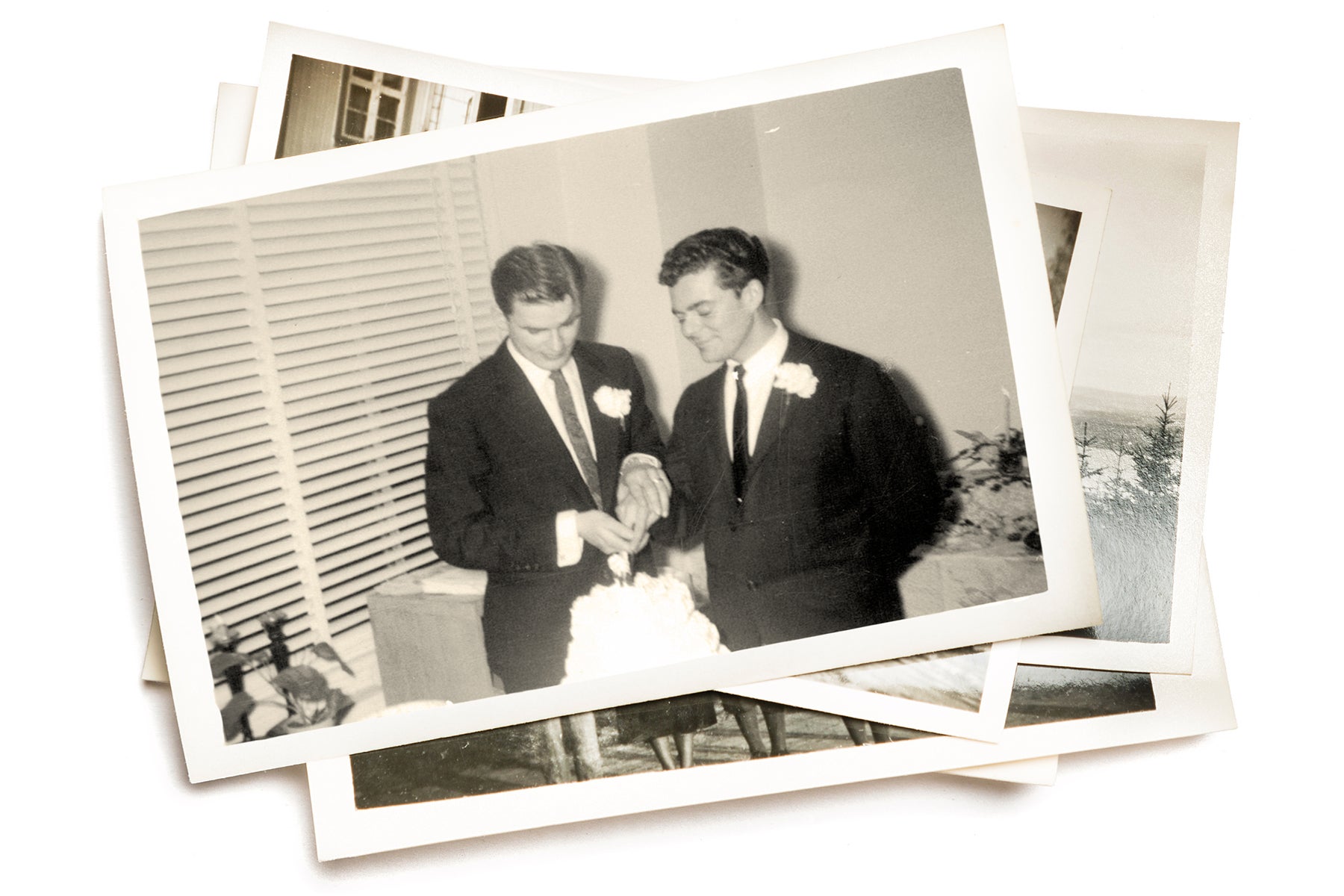
Hawkins also recalled the day a collection of wedding photos from the 1970s arrived. A newlywed male couple had dropped them off to be developed at a drive-through photo kiosk in Philadelphia. The kiosk owners labeled the photos “obscene” and told the men they had been thrown away.
“The daughter of the owners ended up calling us all these years later, saying, ‘I feel really bad that my parents did this. Can you find these people for me?’” Hawkins said. “We were never able to. So, those photos are here.”
Shining a spotlight on collections
Dean of USC Libraries Melissa Just praised Hawkins’ intellectual curiosity and contributions across many areas of LGBTQ+ studies.
“Joseph’s research and teaching have guided ONE’s collecting efforts and the evolution of its cultural programs during his tenure,” Just said. “His keen knowledge of the field is reflected in the sheer breadth and diversity of experiences documented in collections acquired and made accessible by ONE under his leadership.”
Hawkins established the curated exhibitions and programs that are held throughout the year to bring attention to the collections within the archive. The two newest exhibitions, The Space We Take: Portraits from the Archive and Fairy Prince by Halo Starling, open on Friday and will run through Sept. 13.
ONE Archives curator Alexis Bard Johnson said the departure of Hawkins will be deeply felt.
“Just the thought of him not being here in the building is a big adjustment for everyone,” Johnson said. “He’s been such a guiding figure for everyone who has come to the archive.”
Making historical material accessible
Johnson pointed out that when Hawkins first got involved with the archives more than 30 years ago, collections were still in boxes and not cataloged.
“He began basically as a volunteer in a building that was run by volunteers that needed a lot of organization,” she said. “Although its core remains the same, the archives have undergone a real transformation — the level of care and professionalism has really increased.”

Late activist and journalist Jim Kepner, whose steadfast collecting of materials since the early 1940s served as the origins of the archives, was essentially the only person who knew where things were in those early days.
“It’s really important to understand that the reason we have the largest LGBTQ+ collection is the people who were so forward thinking and began this collection,” Hawkins said. “They were collecting underground even in the days when they were being persecuted.”
The extensive collection’s more than 11,000 subject files and 43,000 cross-references enable researchers to find things they probably wouldn’t be able to locate anywhere else, including newspaper clippings, journal and magazine articles, brochures and other printed materials.
It costs approximately $700 to process a single box of archival material, which needs to be organized and stored in acid-free boxes. The material is then added to a detailed online archive so that a researcher can look up a box and find a description of what is inside each box and folder.
Hawkins said that while it has been critical to preserve physical papers and photos, it is now the digitally born materials created more recently that are a challenge to collect and organize.
Even if emails, news websites, blogs and online videos are saved on a hard drive, digital material has to be transferred and kept in a digital asset management system, which is costly.
“If we don’t collect those, then this generation of people are going to have no history. It will be eradicated,” Hawkins said.
The cost of preservation
Hawkins’ previous experience in restaurant industry marketing, which included work with Wolfgang Puck, provided him with the tools to become an effective fundraiser for ONE Archives. Fundraising soon became the dominant part of his role.
He says the organization raised more than $28 million through individual donations, gifts and grants under his tenure. That funding enabled the staff to grow to six full-time members and supported much-needed renovations to the archive’s two-story building at 909 W. Adams Blvd.
ONE Archives received a major boost in April when USC alumnus Paul D. Lerner and his husband, Stephen Reis, made a donation of $2.5 million to name and endow the director position that Hawkins has long held.
When the gift was announced in April, the couple said in a statement: “There is so much more to learn and understand about our histories, so we hope our gift will enable generations of researchers to reveal and reclaim our stories.”
As Hawkins prepares to step away, he said the endowment means everything.
“It was really important to me that Paul and Stephen came forward and did this, because it ensures that USC will hire someone to replace me,” he said. “That person will have to go about doing what I did, which is to fight for the institution and make sure that we’re funded. It’s important that we make sure that it’s guarded forever.”
